In the 1950s Robert Solow tried to reckon what had been the building blocks of USA’s economy in the preceding 50 years. The assumption was that these blocks were the gain in productivity from labour and capital.
However, when Solow put the data of USA’s economy into model equations, capital invested per worker explained only 13% of the American economy’s growth. Solow then ascribed the remaining 87% to a general overarching term of ‘technical change.’ This was a massive residual which needed considerable explanation.
In 2009, renowned physicist Robert Ayres and economist Benjamin Warr decided to revisit the growth model. To labour and capital, they introduced a third factor—Energy. Specifically, productive energy which can be harnessed for economic activity. They applied this 3-factor model to the economies of Austria, Japan, the UK and the USA.
Solow’s residual 87% credited to ‘technical change’ now had a substantive and specific explanation. Access to productive energy was driving economic activity in these nations. More specifically, the availability of cheap fossil fuels was the spring pushing forward economic growth in the last two centuries.
This finding put developing nations in Heller’s coined catch-22 situation. They needed access to energy for their economy to grow. However, access to cheap fossil fuels was becoming remote with each passing year.
Taking cognizance of the climate risks that uninhibited fossil fuel consumption brings to humanity, which has also been acknowledged in the last three decades starting from Agenda 21 in 1992 to Paris Agreement in 2015, Ayres and Warr concluded that ‘we have to anticipate the possibility that economic growth will slow down or even turn negative.’ Nevertheless, this may not be an eventuality.
The turnaround
The pandemic-hit world we live in today has given an opportunity to reorient the energy and economic model of nations. This globally acceptable reorientation can be achieved with a carefully executed plan of action. This would entail an ambitious scale-up in the delivery of clean energy modules.
Already, emerging economies are taking the lead in clean energy growth. Three of the top five renewable energy countries (by capacity) are China, Brazil, and India (as reported by IRENA). These countries are delivering the most important facet for the sector to transform, viz, creating a demand for clean energy at scale, along with long-term policy commitments (capacity targets) for enabling investor confidence.
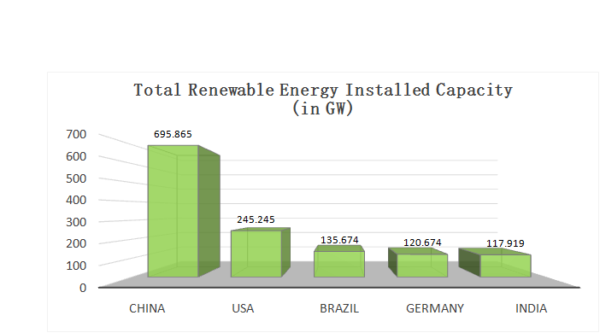
Source: 2019 MNRE Annual Reports
The governments of these nations are showing determination beyond their ‘developed’ counterparts who have historically grown with access and utilisation of carbon-intensive energy.
The Indian story
India, with the lowest per-capita income among the G20 nations and one-third of the world average per-capita energy consumption, is running the world’s largest renewable energy expansion program with a mind-boggling target of 450 GW by 2030.
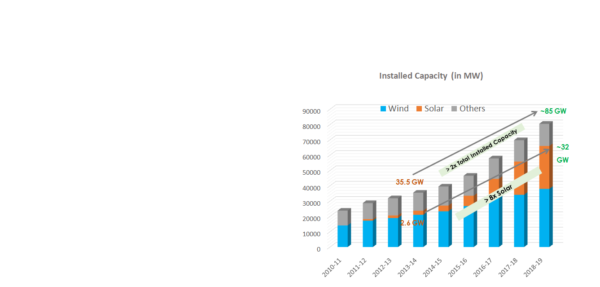
Source: 2019 MNRE Annual Reports
Can India, with growing energy demand, do more than this? Can India do what developed countries should have done years ago—be the author to a new energy story making it the first major economy to reach upper-middle income levels without relying entirely on fossil-fuels?
First, with renewables proving to be a more attractive investment option for global and local investors than fossil fuels, India should attempt to include the generation targets for clean electricity while building capacity. This would enable the efficient addition of renewable assets at scale and also their optimal utilization.
Second, as of now, the majority of clean energy components are imported. On this front, developing a vibrant, globally competitive clean energy components manufacturing industry in India, seamlessly integrated with the global value chain, should be prioritised. This would be the key to delivering a ‘clean scale’ at unprecedented prices, not only for India but also for the rest of the world. This would resonate with Prime Minister Narendra Modi’s AtmaNirbhar Bharat strategy of building locally and aspiring for global markets.
Third, clean development doesn’t mean only clean power. Demand electrification in India hovers below 20% (as per Draft National Energy Policy), which means the majority of energy consumed in India and the world is not in the form of electricity. Heat, in one form or another, is the primary energy delivery module of human civilization, and it will remain so.
Nuclear energy delivery modules provide an excellent complementary value proposition to renewable energy systems. Nuclear gives the option of high-intensity heat and high-volume power, 24×7. Small modular reactor (SMR) technology, if it delivers the promised near-fail-proof performance, gives India an opportunity to pioneer, manufacture and deploy SMR reactors globally at scale.
Finally, distributed renewable energy (DRE) systems such as solar pumps and mini-grids are gaining traction worldwide. India pursues a strategy of using DRE systems to enable and scale up productive, clean energy for households.
KUSUM scheme for farmland solar might be the largest productive energy scheme in the world. Such productive energy schemes, where local clean energy systems are coupled with productive economic tools like cold storage, food & dairy processing, and MSMEs will give the control of rural households’ energy economy to their communities, with adequate support from the state.
India should strive to become the largest productive DRE market in the world, providing scale and setting standard operating procedures for such systems for the world to follow.
Conclusion
The importance of energy to the Indian economy cannot be overstated. The Economic Survey (2018-19) highlighted how a 2.5 times increase in per capita energy consumption (from 24 gigajoules) would lead to a rise in real per capita income by US$ 5000, putting India in the upper-middle-income group category. Furthermore, a four-times rise in per capita energy consumption (to about 100 gigajoules) has the potential to push India to the human development index (HDI) score of 0.8 from 0.64 currently. India can uniquely reach this potential with less reliance on fossil fuel-based energy.
At the birth of our Republic, most leaders highlighted India’s “unique capacity to offer moral leadership in world affairs.” However, along our developmental story, India has been asked to emulate the East Asian story, the Chinese story, the American Story.
The vision for the energy economy is to write a unique Indian story. A story which will be aspired for, and emulated in posterity.
Satwik Mishra and Kowtham Raj VS are young professionals at Governance and Energy divisions of NITI Aayog, respectively.
The views expressed here are strictly personal and do not reflect the positions of affiliations of the authors.
The views and opinions expressed in this article are the author’s own, and do not necessarily reflect those held by pv magazine.
This content is protected by copyright and may not be reused. If you want to cooperate with us and would like to reuse some of our content, please contact: editors@pv-magazine.com.



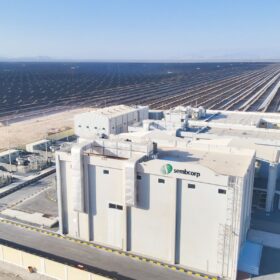
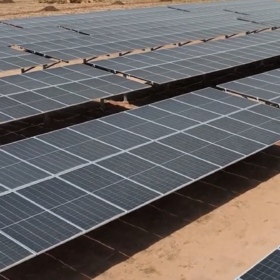

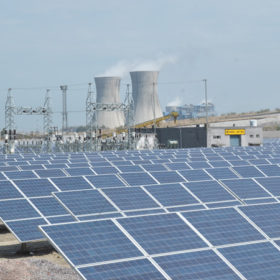
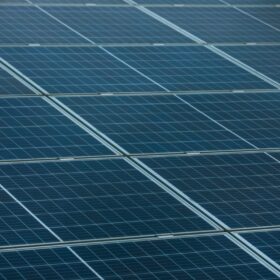
1. 450GW of Renewable Energy is indeed mind boggling… but simply too short or small for a Zero Pollution Option (not limited to Electricity Only).
2. For a Zero Pollution Option….. India needs a 10-15TW Solar System to meet Today/Future Needs…. certainly the Higher Value… or more than 30 Times (the proposed 450GW).
3. The “In the Box” thinking will NOT work as it is simply too Dependent on Too Much from Too Few.
4. India, today, has 650,000 Villages and (typically) 25MW in each Village using AgriVoltaics on <<10% of the 2.2Million Km2 Agricultral Land is needed… simply…. 25MW X 600,000 Villages = 15TW. (Assume 50,00 Villages will NOT participate).
5. This will require about $20-30 Trillion Investment. (This is an Investment NOT an Expenditure. The Electricity produced will provide a healthy ROI).
6. Due to the "Massive" Financial and Land Requirements and "Broad Base" of such a System; an Out of the Box RBI Anchored, G2F (Govt. to Farmer) Model, is Needed.
7. "Urban India" (Industry and Labor) would benefit (profit) from supplying all the Materials, Components, Assemblies and Systems. "Rural India" would prosper from Installation and Day-to-Day Operation & Maintenance and halt the Menace of The Rural-Urban Migration.
8. The G2F Partnership would "share" from Sale/Use of Electricity to Urban Users and at the Villages themselves.
9. Availability of Electricity in Rural India using AgriVoltaics would ensure support for Agriculture, Irrigation, Agro Based Food Processing, Refrigeration & other Rural Consumption (Electric Tractors, Vehicles, Homes etc..)…. etc..
10. The Annual "Value of Electricity produced (15,000-20,000TWhrs @Rs10/KWhr) would add $2-2.5 Trillion to the Economy as it "Pays Off" the Investment.(With an Economic Multiplier of… say 3… this would be worth $6-7.5 Trillion per Year).
11. This is repeated every 25-30 years, as the PV Panels live out their "design" lives…. in the same villages and farms who continue to farm with enhanced production and Income.
12. This Zero Pollution Option RESTORES the Clear Skies & Health of ALL THE PEOPLE, Forests, Animals and the Environment too.
The analysis & conclusions need to take into account the following factors in the Indian Context.
i) Indian per Capita Energy Consumption is much lower in comparison with the World Average per Capita Energy Consumption, due to
a) no/limited access to Electricity to nearly 30% of the population;
b) India is blessed with much better Sun shine & Temperate Climate in most part of the country;
Hence, we need to be careful, while Indian Energy Consumption requirement vis a vis World. More detailed analysis is required based actual Energy needs & should not be linked just to Economic Growth.
c) we need to factor in the impact of Energy Efficient Technologies & Solutions/Products, commercially available today at affordable Costs & Prices. e. g.
c-1) LED Lighting has substantially reduced Energy demand in India. If we refer to EESL data it’s
clear that switching to LEDs, so far has reduced the Lighting demand to the tune of 30 GW!
LED Lights save @ 90% Energy vis a vis Incandescent Lamp & 50% vis a vis CFL
c-2) Energy Efficient Technologies reduce Cooling Fans/Air Conditioner/Refrigerator/Pumps
Energy Consumption by nearly 40 to 60%.
c-3) There is huge scope to reduce Energy Losses in our Transmission & Distribution, which are to
the tune of 25%.
c-4) Most of our Coal Based Thermal Power Plants have reached end of life & need to be phased
out, as these are highly polluting & in-efficient. On the other side, we have new 60 GW
installed Thermal Power Plant capacity under NPA, due to non-availability of Coal & PPAs!
c-5) Energy Storage integrated with Power Generation can allow Power Plants to operate at
higher load & Efficiency
c-6) Off Grid Local Solutions with Energy Efficient Equipments & Devices, can substantially save
on Energy demand.
c-7) In addition, out of box thinking at ground level can help reduce Energy demand
With all of the above measures in place with appropriate Policy measures & Regulations,
Energy demand can be reduced by @ 40% to 60%, de-coupling it from Economy.
d) As per the 2014 NISE Report, India’s Solar Energy Potential is 750 GWp, considering Solar PV
Panel efficiency of 15% at that time in 2014!
Today, in 2020, more efficient Solar PV Technologies (Mono PERC/TopCon/n Mono IBC/HJT
etc.) have led to Efficiency in excess of 23%.
In addition to this, Bi-facial Technologies can increase Energy Generation by 20 to 30%.
Also Single Axis Trackers can further increase Energy Generation by additional 25%.
All these Improvements, lead to the conclusion that India’s Solar Energy Potential is 1725 GWp!
(nearly 2.3 times of the NISE 2014 Forecast)
Solar Power has already achieved Grid parity, in fact, today Solar Power is cheaper than
Conventional Coal Based Thermal Power Plants.
e) Similarly, Wind Energy also has reached Grid Parity. As per 2014 NISE Report, Wind Energy
Potential in India was forecast to be 200 GW. Considering, today’s advances in Wind Energy
Technologies, the fore cast need to be revised & expected to be in excess of 400 GW.
f) Solar & Wind Power Plants are complementary to each other, as Solar is strong in day time &
peaks at noon, while, Wind is stronger in the early morning, Late Evening & in the night.
Hence, Solar Wind Hybrid Plants with Energy Storage can & should be the future in India.
It may also be noted that China has been able to install 55 GWp Solar Capacity in one year.
Considering the fast Installation capability of Solar & Wind Power Plants, Annual Installation Target of 50 GWp for Solar & additional 25 GW of Wind Power Plants is realistic.
In view of all of the above factors, India’s Renewable Energy Target of 450 GW by 2030 is very modest & needs to be substantially increased. to 700 to 750 GW.
In modern business, there is an increasing need for high-tech solutions to ensure control over operations, efficient document processing and the elimination of human errors. Now precoro AI software can be the perfect choice for your business. Precoro software allows you to automate the process of reconciliation of accounts, and three-way data comparison will ensure the absence of errors in payment documents. You can order a demo version of precoro and evaluate new opportunities for your business.